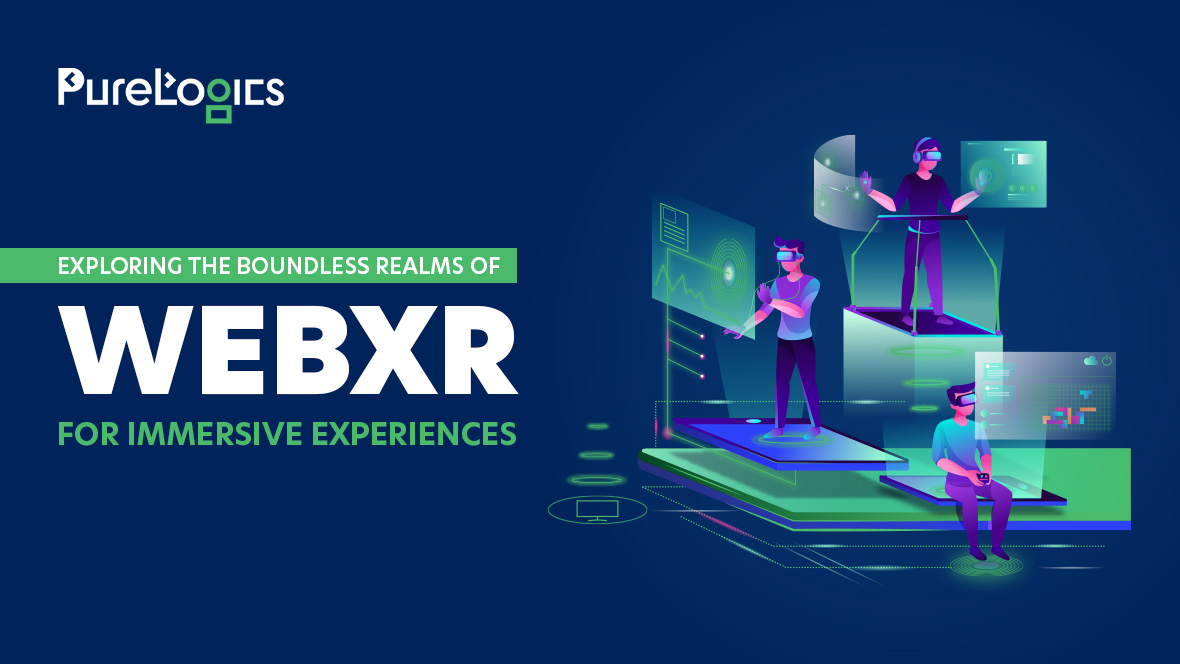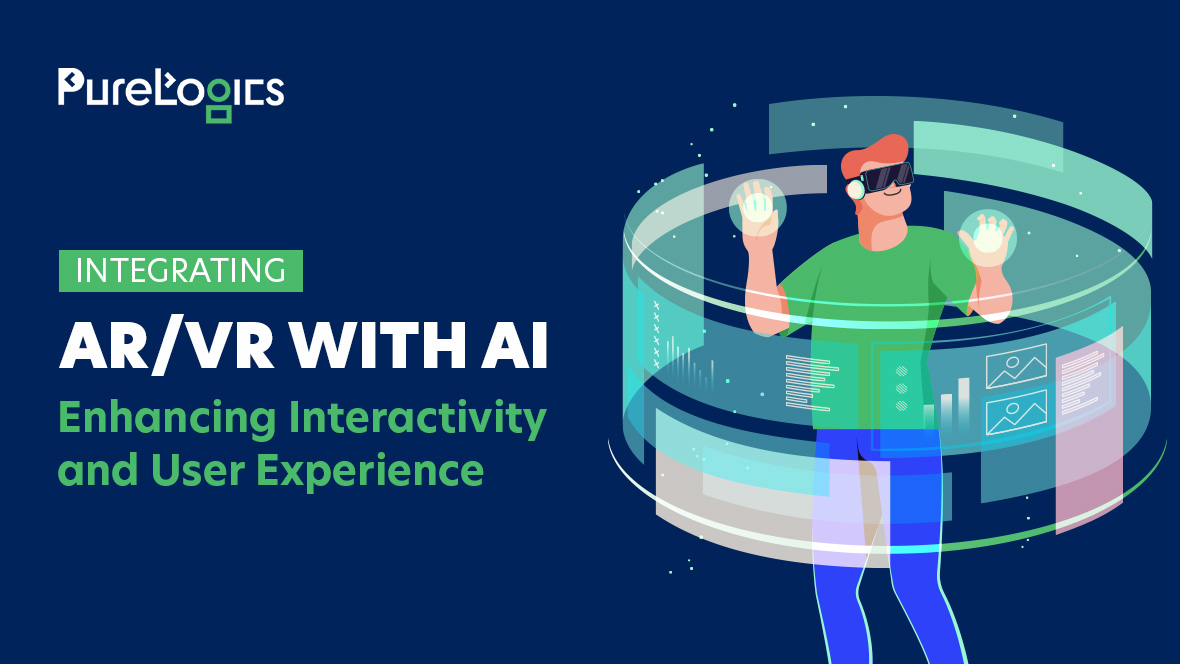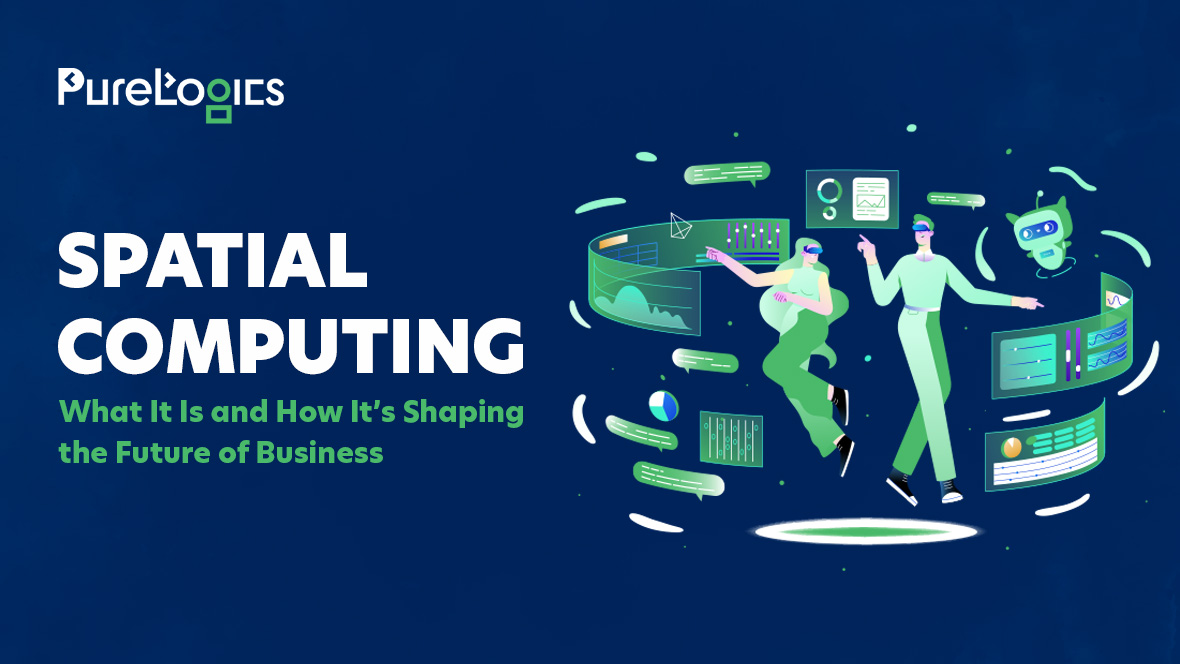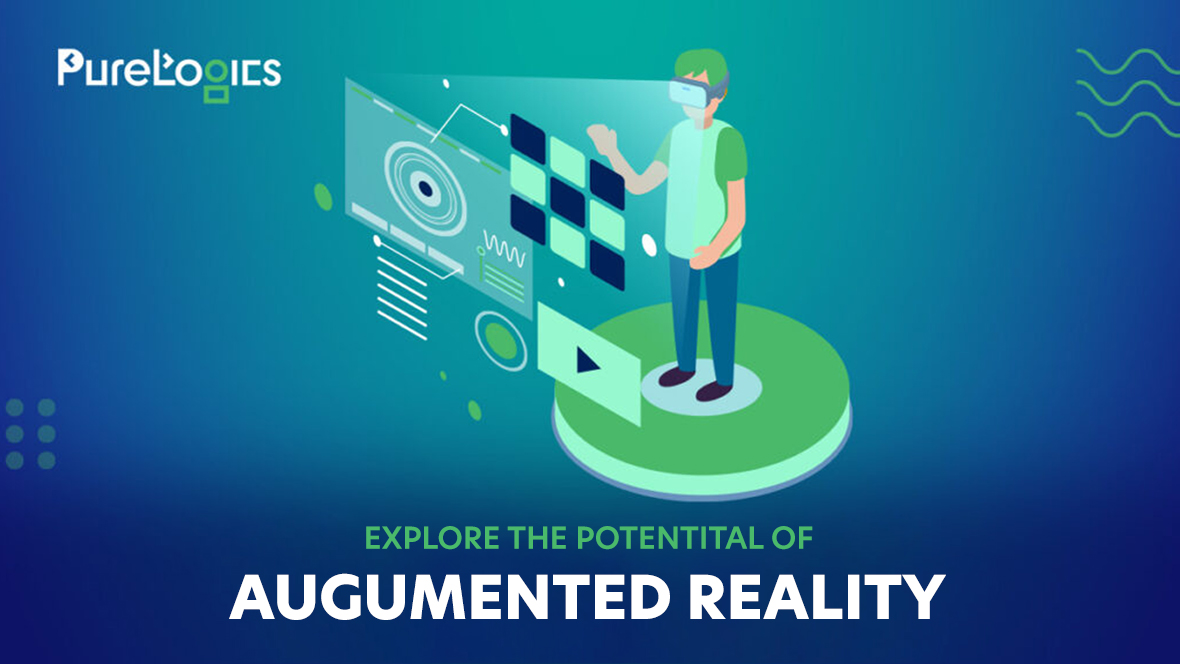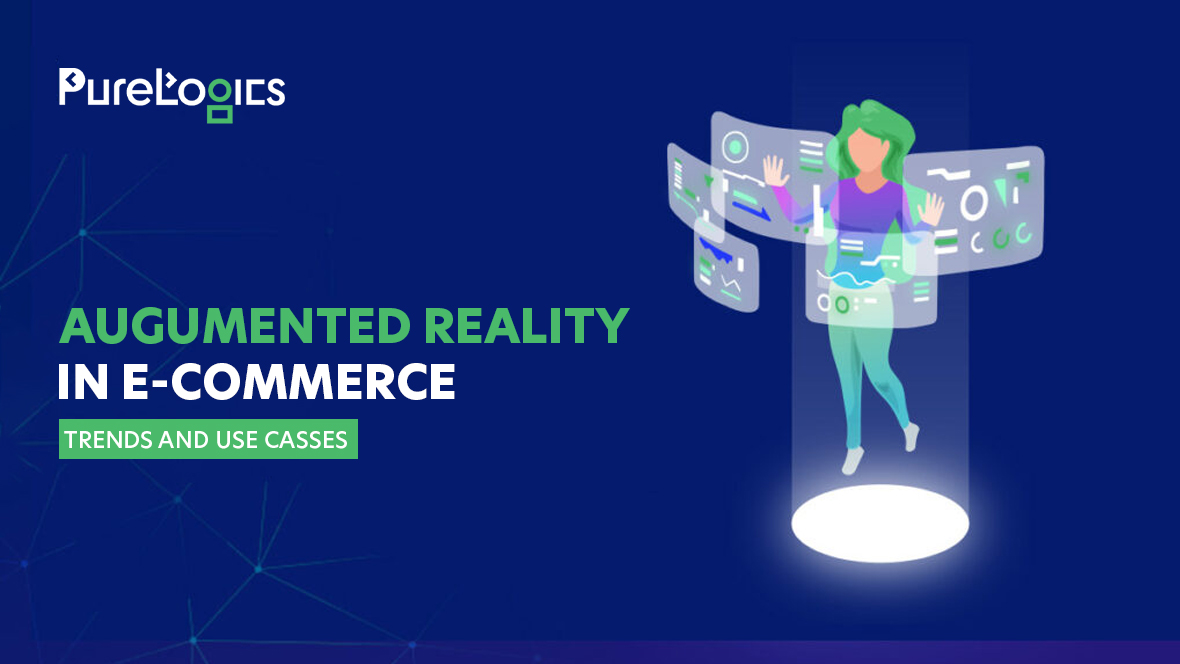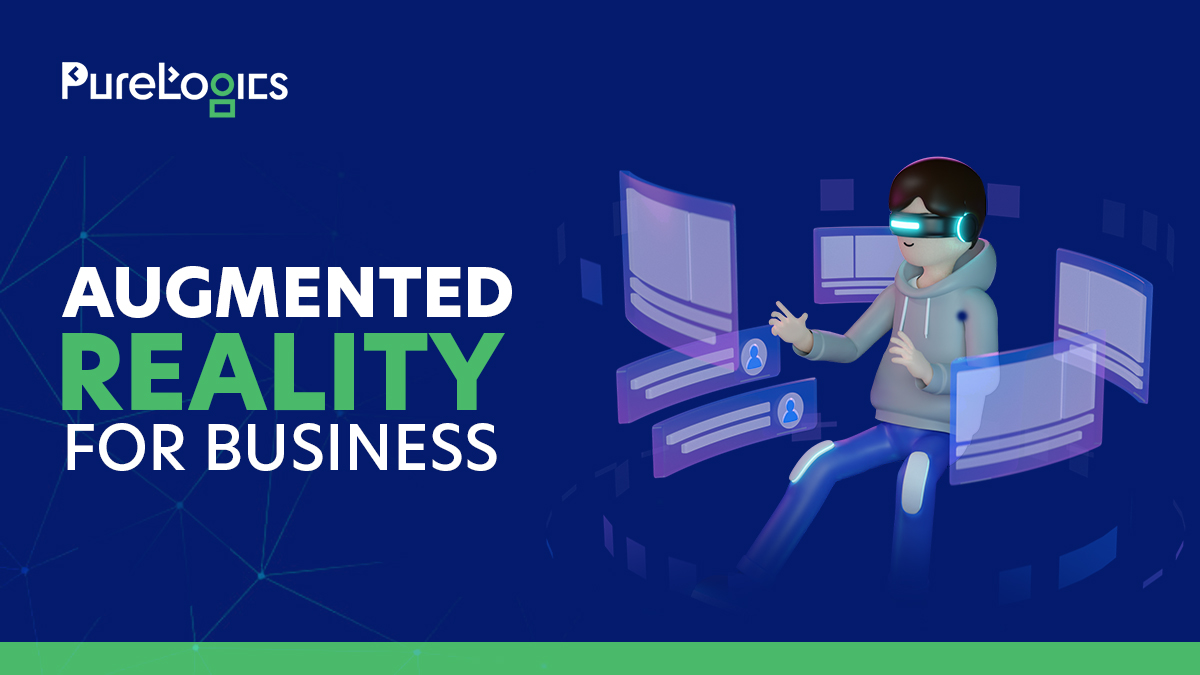WebXR is redefining how we experience the digital world, seamlessly integrating virtual reality (VR) and augmented reality (AR) into web browsers. With its growing significance across various industries, understanding the components, applications, and best practices of this technology is crucial for those seeking to innovate.
How does WebXR differ from traditional XR? What are its core elements, and where is this technology heading?
Let’s dive into the world of WebXR and explore its limitless possibilities.
What is WebXR?
WebXR, short for Web Extended Reality, is a web standard and API that enables immersive VR and AR experiences within web browsers. By utilizing familiar web technologies such as HTML, CSS, and JavaScript, developers can create interactive 3D environments accessible across various devices, including smartphones, tablets, desktops, and VR headsets.
This universality ensures that users can engage with immersive content without the hurdles of additional software installations or specific hardware requirements.
Components of WebXR and Their Characteristics
WebXR encompasses several key components, each contributing to the creation and delivery of immersive experiences:
- WebXR Device API: This foundational API facilitates interaction with XR hardware, managing device detection, session handling, and input/output operations. It serves as the bridge between web applications and XR devices, enabling seamless integration.
- Rendering APIs: Technologies like WebGL and WebGPU are essential for rendering 3D graphics within browsers. They provide low-level tools for manipulating pixels, enabling developers to craft visually compelling environments.
- Sensor APIs: These APIs track user movements, orientation, and input interactions, supplying the data necessary for creating responsive and realistic XR experiences.
- Frameworks and Libraries: Tools such as Three.js, A-Frame, and Babylon.js simplify the development process by offering pre-built components and structures for building 3D graphics and immersive environments.
Importance of WebXR in Today’s Digital Landscape
WebXR is transforming the way we interact with digital content by making immersive experiences accessible directly through web browsers, no downloads or special hardware required. This ease of access is revolutionizing industries like education, healthcare, retail, and real estate.
For instance, online shoppers can now visualize products in 3D before making a purchase, which reduces return rates up to 40%. In education, WebXR enables virtual field trips, making learning more engaging and effective. Healthcare professionals are utilizing WebXR for remote surgeries and mental health therapy, providing realistic simulations that are free from physical constraints.
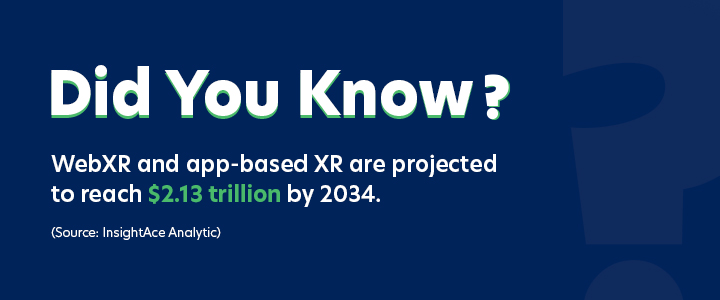
Moreover, businesses can create virtual showrooms and collaborative workspaces, eliminating geographical barriers. With the growing adoption of 5G and AI, WebXR is set to bridge the gap between the physical and digital worlds, offering seamless and interactive experiences that redefine engagement, efficiency, and innovation across various fields.
WebXR vs. Traditional XR Applications
Understanding the differences between WebXR and traditional XR applications is crucial for developers and businesses seeking to select the most suitable platform for their specific needs.
| Aspect | WebXR | Traditional XR Applications |
Accessibility | Accessible through web browsers without additional downloads | Requires installation of specific applications |
Cross-Platform Support | Operates across various devices and platforms | Often limited to specific hardware or ecosystems. |
Development Tools | Utilizes standard web technologies like HTML, CSS, and JavaScript | Requires specialized development tools and knowledge |
User Experience | Seamlessly integrates with web content for a unified experience. | Users must switch between different applications. |
Content Discovery | Indexed by search engines, enhancing discoverability | Not typically indexed, limiting visibility |
Distribution and Updates | Immediate updates without app store approvals | Updates require app store processes and user action. |
Privacy and Security | Operates within secure browser environments | Security varies based on platform and application. |
Performance | May have performance limitations due to browser constraints | Can leverage device-specific optimizations for better performance |
Applications of WebXR
The versatility of WebXR opens doors to numerous applications across various sectors:
- Education: Immersive simulations and virtual classrooms can enhance learning experiences, making complex subjects more tangible and engaging.
- Healthcare: Medical training can benefit from realistic simulations, while therapeutic applications can offer virtual environments for patient rehabilitation and recovery.
- Entertainment: Interactive storytelling and gaming experiences become more engaging with immersive web-based platforms.
- Retail: Virtual showrooms allow customers to explore products in 3D. This has led to more informed purchasing decisions.
- Real Estate: Virtual property tours offer potential buyers immersive previews, saving them time and resources.
- Collaboration: Virtual meeting spaces can facilitate remote teamwork. They offer a sense of presence and interaction beyond traditional video conferencing.
WebXR Best Practices
To create engaging, high-performance WebXR experiences, developers and businesses must follow best practices that enhance usability, accessibility, and overall effectiveness. Below are key best practices to ensure a seamless WebXR experience:
1. Prioritize Performance and Optimization
WebXR experiences must run smoothly across different devices and browsers. Optimizing 3D assets, using efficient rendering techniques, and leveraging WebGPU or WebGL can improve performance. Compressing textures, reducing polygon counts, and implementing Level of Detail (LOD) techniques help maintain smooth interactions without lag.
2. Ensure Cross-Platform Compatibility
WebXR applications should be compatible with a range of devices, from high-end VR headsets to basic smartphones. Testing across different browsers (Chrome, Edge, Firefox) and devices ensures a consistent experience. Additionally, the use of responsive design techniques allows experiences to adapt based on screen size and hardware capabilities.
3. Maintain Low Latency for Real-Time Interaction
A delay in response time can break immersion in XR environments. Keeping latency below 20ms is ideal for preventing motion sickness. Techniques such as predictive rendering, hardware acceleration, and minimizing unnecessary computations help maintain real-time interaction.
4. Optimize UI and UX
WebXR interfaces should be intuitive and user-friendly. Floating menus, voice commands, and gesture-based controls can enhance navigation. Ensuring clear affordances (visual cues on interactive elements) prevents user confusion. Additionally, UI elements should remain legible and responsive across various display types.
5. Ensure Accessibility for All Users
WebXR must cater to individuals with disabilities. Adding features like voice control, haptic feedback, and adjustable font sizes improves accessibility. Following Web Content Accessibility Guidelines (WCAG) for XR, such as offering text-to-speech and customizable color contrasts, makes WebXR experiences more inclusive.
6. Implement Efficient Loading Strategies
Long loading times can frustrate users and increase bounce rates. Lazy loading, asset streaming, and progressive enhancement ensure that users can engage with content as it loads, rather than waiting for the entire scene to render. Using Content Delivery Networks (CDNs) and caching strategies can further enhance speed.
7. Enhance Security and Privacy
WebXR applications often collect user data (such as eye tracking, gestures, and location), which makes encryption and compliance with data privacy regulations, like GDPR and CCPA, crucial. Additionally, avoid storing any sensitive data unnecessarily, and always request user permission for data collection.
8. Support Offline and Low-Bandwidth Environments
Not all users have access to high-speed internet. Implementing Progressive Web App (PWA) features enables WebXR experiences to function offline or with limited connectivity. Compressing assets and minimizing bandwidth usage can enhance accessibility in regions with slower internet speeds.
9. Test and Iterate Based on User Feedback
User testing is crucial for refining WebXR applications. Gathering feedback through A/B testing, usability studies, and performance analytics ensures that the experience meets user expectations. Developers should continuously iterate based on real-world usage patterns.
Future Trends in WebXR
WebXR is evolving rapidly, shaping the way we interact with digital environments. As technology advances, new trends are emerging that will enhance accessibility, realism, and interactivity. Here are five key trends to watch:
- AI-Driven Personalization in WebXR
Artificial intelligence (AI) is revolutionizing WebXR by enabling dynamic, personalized experiences. AI algorithms analyze user behavior to adapt virtual environments in real time, making experiences more engaging.
For example, e-commerce platforms can utilize AI to create personalized 3D shopping spaces, where product recommendations are tailored to the user’s preferences and past interactions.
- 5G and Cloud-Based WebXR
The rollout of 5G networks is significantly improving WebXR experiences by reducing latency and increasing data speeds. This allows for real-time rendering of complex virtual environments without requiring high-end devices.
Cloud-based WebXR will enable users to access high-quality VR and AR experiences directly from a web browser, making immersive technology more accessible than ever.
- Blockchain and the Metaverse Integration
WebXR is expected to play a vital role in decentralized metaverse platforms, where users can own and trade virtual assets, such as NFTs, digital real estate, and avatars.
Blockchain ensures secure transactions and ownership, making WebXR a key component in the evolution of digital economies. Platforms like Decentraland and The Sandbox are already leveraging this technology.
- Mixed Reality (MR) Web Applications
The line between virtual and real-world experiences is blurring, thanks to mixed reality (MR) in WebXR. Future applications will enable users to interact seamlessly with digital objects in real-world environments.
For instance, architects can place 3D building models in a real space, or medical professionals can use WebXR for interactive anatomy training.
- Web-Based Virtual Workspaces and Collaboration
The rise of remote work is fueling the demand for WebXR-powered virtual offices. Companies are shifting towards immersive digital workspaces where employees can collaborate using 3D avatars, spatial audio, and shared virtual tools.
Unlike traditional video conferencing, these platforms create a lifelike office experience, enhancing engagement and productivity.
Final Remarks
WebXR is not just an emerging technology; it’s a transformative force reshaping how we interact with digital environments. With its uninterrupted accessibility, cross-platform capabilities, and expanding applications, WebXR is set to revolutionize industries ranging from education and healthcare to e-commerce and entertainment.
Looking to implement innovative WebXR experiences for your business? Our team at PureLogics specializes in immersive web development, helping brands leverage the full potential of XR technology.
Book your free consultation to bring your vision to life!


 [tta_listen_btn]
[tta_listen_btn]
 June 12 2025
June 12 2025

